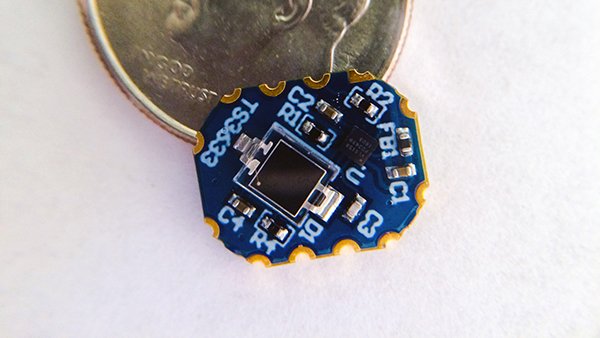Ever since Valve opened Lighthouse tracking technology to third parties, many third-party companies have been able to use it to develop their own VR hardware. A few days ago, a company called Triad Semiconductor announced that it will ship a special chip that will allow other companies to use it to create helmets and peripherals that use SteamVR tracking technology.

Lighthouse tracking technology
Triad Semiconductor is from the United States and is a company that specializes in creating analog and mixed-signal integrated circuits. It is reported that this chip will form the basis of SteamVR to track the necessary sensor array, and this chip has also obtained Valve's permission.
The chip, called TS3633, is a small "light-to-digital" integrated circuit. It receives input signals from photodiodes (as small sensors distributed over the HTC Vive) and converts them into useful data that can be used by the SteamVR tracking algorithm.

The chip named TS3633
Behind this chip, Valve has exerted great efforts. Reid Wender, Triad's vice president of marketing, said that Valve designed, licensed and licensed the "light-to-digital" solution used by SteamVR:
"This chip is Valve's design. Together with Triad, they define the function of the chip. Valve's team has a very strong algorithm talent, they will not only think about the cool solution, but will soon put into practice. Valve's vision is to SteamVR tracking is open to the world, enabling accurate tracking applications ranging from space-sized VR to implanted robotic engineering control and more."
It is reported that Triad is the first company to create similar TS3633 integrated circuits for SteamVR tracking, and this chip will be available for sale later this month.
Its price is $0.92 for a 50-piece purchase, and $0.49 for a 1,000-piece purchase. A Steam VR tracking helmet equipped with 32 sensors means that the cost of the chip will need 15.68 US dollars (about 100 yuan). There is also a need for photodiodes and some other components, not including helmets or other materials needed for peripherals.

TS3633-CM1 Cellular Module
In order to facilitate the use of the TS3633, Triad has also created a TS3633-CM1 honeycomb structure module that can accommodate the TS3633, photodiodes, and resistors. This CM1 is priced at $6.85 each if you purchase 10 units. It will also be listed at the end of this month.
Wender also gives an overview of the structure of tracked objects using Lighthouse technology:
1. The first is the light to digital sensor (photodiode +TS3633). In general, tracked objects have 20 to 32 sensors. A smaller number of sensors can be used in more "lightweight" tracking applications.
2. Digital functional block for aggregating the envelope signal of each TS3633. The current system uses FGPA, which accepts 32 sensor inputs.
3. Inertial Measurement Unit (IMU), which provides positional information that will be combined with light-to-digital angle information.
4. A microprocessor, which takes data from the FGPA and inertial measurement unit to form a data packet. It is then sent to the host processor (a computer that is currently a Windows or Linux system) via a USB or proprietary 2.4 GHz connection.
5. The main processor runs SteamVR software as the "positioning engine" and it calculates the position and direction of the object being chased.
It can be seen that the structure is relatively complex. Wender himself also said that at this stage, for most people except engineers, the creation of a new device for SteamVR tracking technology is still more complicated, but he also revealed that Triad is developing more easy-to-use products for those “simple Chasing objects."
